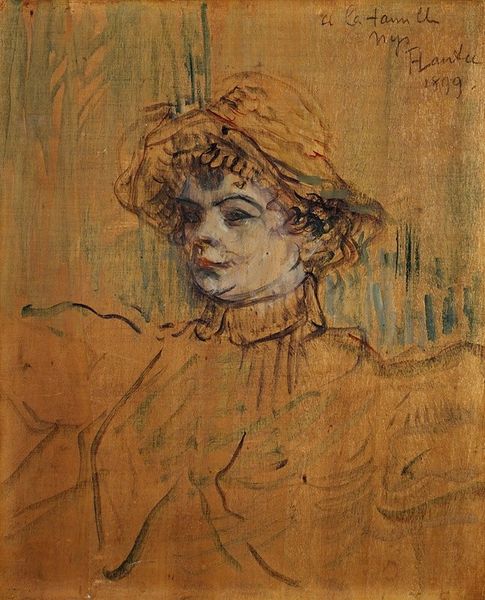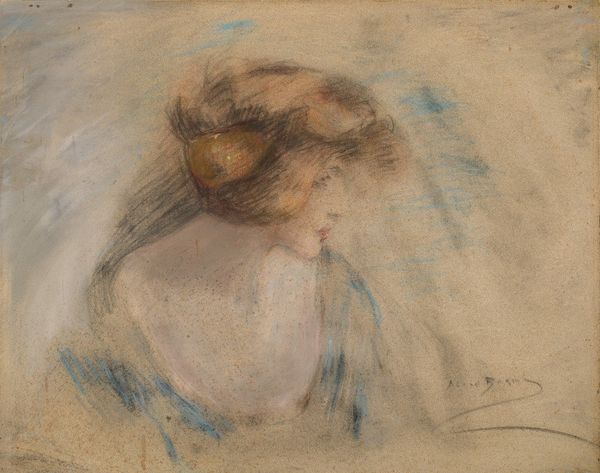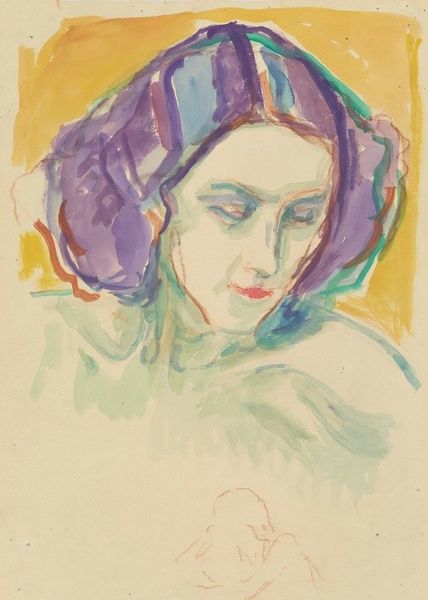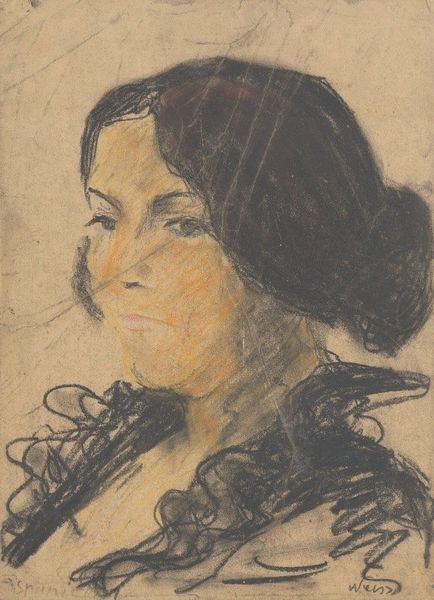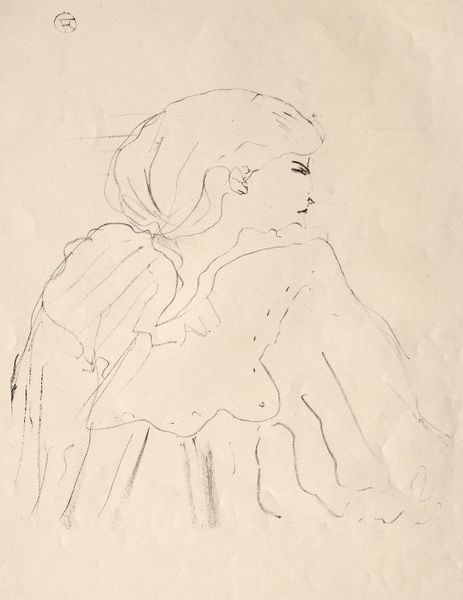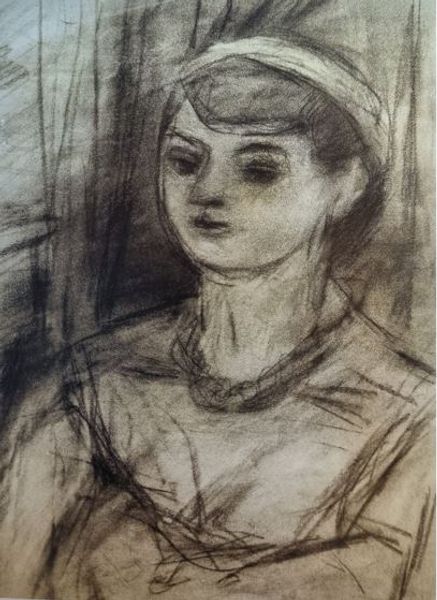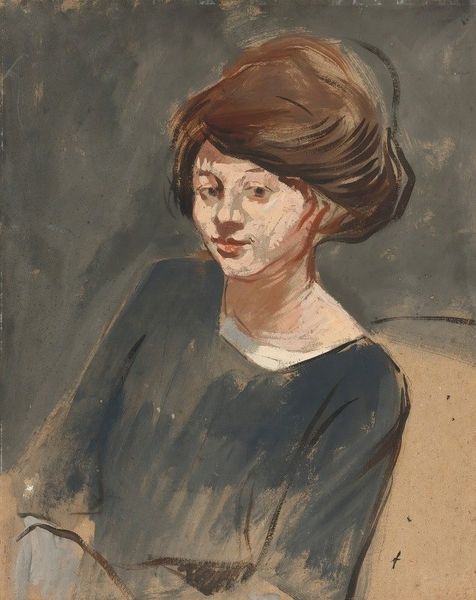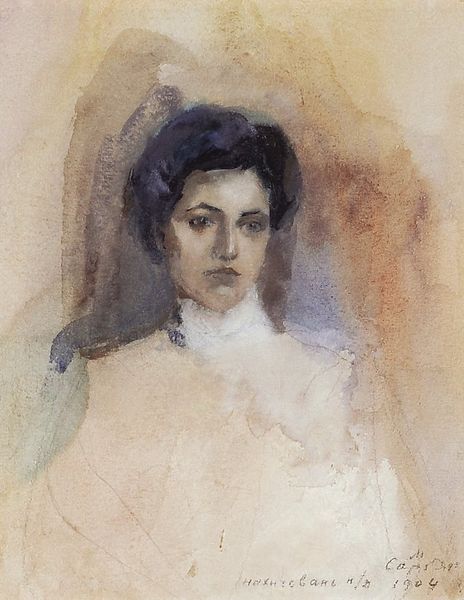
Copyright: Public domain
Curator: Henri de Toulouse-Lautrec’s "Head of a Woman," created around 1896, presents a striking, almost haunting image in oil paint and possibly pastel on cardboard. Editor: There's an immediate sense of melancholic intimacy. The colors are muted, and the lines are deliberately raw, as if we've caught a glimpse of a private moment. It evokes a somber mood, a quiet sadness. Curator: Indeed. Look at the structural simplicity – the swift, decisive strokes that define the subject’s features. Lautrec avoids conventional beauty, opting for an unvarnished depiction. Note also the visible underdrawing, it speaks volumes. Editor: Those visible lines! They remind me of sketches in ancient Egyptian tombs, delineating a symbolic passage from one world to another. There is a vulnerable rawness that contrasts with the societal expectations for women's portraiture at that time. This image feels far from performative. Curator: A crucial point. The flatness of the cardboard, the minimal use of modeling – these contribute to an aesthetic that privileges surface and mark-making over illusionistic depth. It pushes back against academic painting through it’s very construction. Editor: It's fascinating to think of her place in fin-de-siècle Paris. She could be a working woman, an artist’s model, a courtesan – someone who navigates the complex symbolic terrain of the city at night. Curator: Certainly, her social positioning is not explicitly stated, allowing multiple interpretations, yet the formal qualities assert themselves regardless: The subtle tension between the rapidly applied strokes and the areas of bare support invite the eye to continually oscillate between the image and its material presence. Editor: Lautrec captured an internal essence and created a timeless connection that extends into the contemporary context. The image is charged with meaning that will resonate for ages. Curator: Ultimately, I find the painting to be a study of pictorial reduction that prioritizes directness and expressivity. Editor: For me, it reflects a broader cultural anxiety that the fin-de-siècle seemed determined to excavate.
Comments
No comments
Be the first to comment and join the conversation on the ultimate creative platform.
